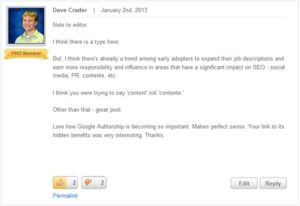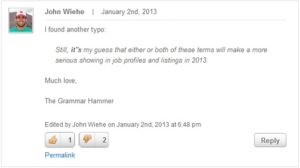by Dave Crader
Welcome to the third addition to my Content Marketing Strategy Development blog series. You may be interested in reading these previous posts before diving into this one:
Part 1: How To Develop a Customer Persona
Part 2: Aligning Personas to Your Sales Funnel
In Part 1 you’ll learn why customer personas are important and how to develop them and in Part 2 you’ll learn where you might be in need of additional content to push your prospected customers to the next stage of your Sales Funnel.
Part 3 will cover content formats and will explain how to choose the best format to tell your content story. So let’s begin.
Table Of Contents
Blogging
Blogging is by far the most popular content format used in Content Marketing. It’s inexpensive, easy and generally provides a high Return On Investment (ROI). It can be great for building a social media community and developing thought leaders within your company. Unlike most other content formats; authenticity, frequency and personality take priority over perfect grammar and aesthetics. For example, two of my favorite blogs, SEOmoz and TwistImage, both have sub-par grammar, but that doesn’t stop them from receiving thousands of visitors every day. Why? Because their content is authoritative, helpful and generally amazing.
Now, if you’re writing for a major corporation or government agency the culture is going to be very different and grammar is still going to be important. But, if you’re writing for more of a ‘fun’ industry such as advertising or fashion, grammar will take second place.
For example, one time I left a friendly comment to the editor of SEOmoz about a spelling error on a new blog post:

I received two ‘dislikes’ for my efforts. A few minutes later someone named John Wiehe tried to correct another grammar blunder:

He received two ‘dislikes’ as well. It’s just not in the culture of the ‘fun’ SEO industry, or the SEOmoz blog, to care about grammar.
If you’re going to choose blogging for your content format remember that the quality, authority, frequency and personality of your content will be the primary factors that make your blog successful.
Best For:
- Building a social media community
- Building individual author authority
- Generally less ‘salesly’ topics
- Short-form content (500-2000 words)
- Small budgets
Content Article
Articles are very similar to blog posts, but they do posses a few differences. An article is less about a particular author’s point of view and more about in-depth information and answers about your company and/or your industry. Word length is a little more flexible than blogging in that an article can be either short or long. However, grammar is much more important with this content format as well as professionalism in general. When writing an article, ask yourself “would my favorite industry magazine publish this article in print?”
Best For:
- FAQs
- Definitions
- Generally more ‘salesly’ product focused topics
- Building company authority
- Small budgets
White Paper
White Papers are great for technical topics that are difficult to understand and require a lot of explanation. They are typically between 10-20 pages long and are usually proofed by a professional editor before being published. The tone tends to be very serious and the opinion is usually of the company as a whole. Charts, graphs and an overall greater attention to detail are common traits of most white papers. Due to the amount of work required to publish a white paper, it is common to ask individuals for personal information such as Name, Company and E-mail before allowing that individual to download and read the White Paper. This makes White Papers great for lead generation.
Note: White Papers are sometimes referred to as “E-Books.” The only real difference between an E-book and a White Paper is length. Generally, an E-book is longer than a White Paper.
Best For:
- Lead generation
- Technical and confusing topics
- Building company authority
- Long-form content (2000+ words)
- Medium-sized Budgets
Web Videos
Video is the only content format that can tap into both audio and visual senses simultaneously. Moving text (callouts), sound effects, transitions and narrations are all appropriate and should be included in a web video if possible. Splitting up your video content strategy into a multi-video series is also a good idea because users tend to zone out after about four minutes. In fact, YouTube gives users the option to filter videos by short and long variations when searching – with short variations capped at four minutes.

With video, it’s much easier to convey humor and build personable, identifiable characters that users can relate to on an emotional level. Conversely, it’s much harder to communicate complex information that users will need to go back and review several times to absorb. For example, a guide to computer programming would probably be better served in the written format while a guide to New York City’s landmarks would probably be fine in the video format.
Best For:
- Funny and entertaining content
- “How To” and instructional content
- Company Introductions
- Product Demonstrations
- Interviews
- Content with a climax
- Case studies
- High budgets
Example:
Press Releases
Press releases are great for bragging about your company, its products, its employees and even its content. Before the Internet, a press release would typically only be written to announce big news because the release would be so expensive to distribute. Nowadays, a press release can be written about a wide variety of topics because the release can be distributed to thousands very inexpensively with sites like PRWeb and PR Newswire.
Keep in mind that a press release will be seen by more than just journalists these days. If you’re using a service like PRWeb or PR Newswire, your release will likely appear in Google within seconds of being published. This means that the release will most likely appear when someone searches for your brand name in Google. Consider this new audience when writing, and make sure to include links within the release back to your website.
Best For
- Company awards
- Events
- News
- Acquisitions
- New Hires
- Employee achievements
- Distributing your content to
- Medium-high budgets
Example:
Infographics
Infographics are fun visual representations of data or information. They are a great way to tell a story and present data in a creative and easy to understand way. Unlike a blog post, an infographic can reveal the relationships among multiple pieces of dissimilar information at a glance. For example, take a look at WordStream’s infographic that communicates how Google makes money. The company collected data from over a trillion different keywords in different industries and compiled it all into one easy to understand visual story. If the infographic was specific to just one industry it would have been much easier to make, but not nearly as effective.
Infographics are popular in the SEO industry because of their ability to attract backlinks and social shares. Internet users love research data. And when that research data is presented in a visually pleasing way you have a recipe for success.
If you’ve got the budget, and some interesting data to share, an infographic would be a great choice for a content format.
Best For:
- Data and research
- Case studies
- Telling a story when video isn’t appropriate
- Helping interesting content go viral
- High budgets
Examples:
- Dr. Pete’s The Google AdWords Landscape
- WordSteam’s Breaking Down Google’s 2011 Revenues
Summary
I hope this post has helped you decide which format to use for your content strategy. If you take away just one thing, please let it be this:
The content drives the format – not the other way around.
Next Up: Developing a Content Marketing Strategy: Choosing a Distribution Channel – Part Four

